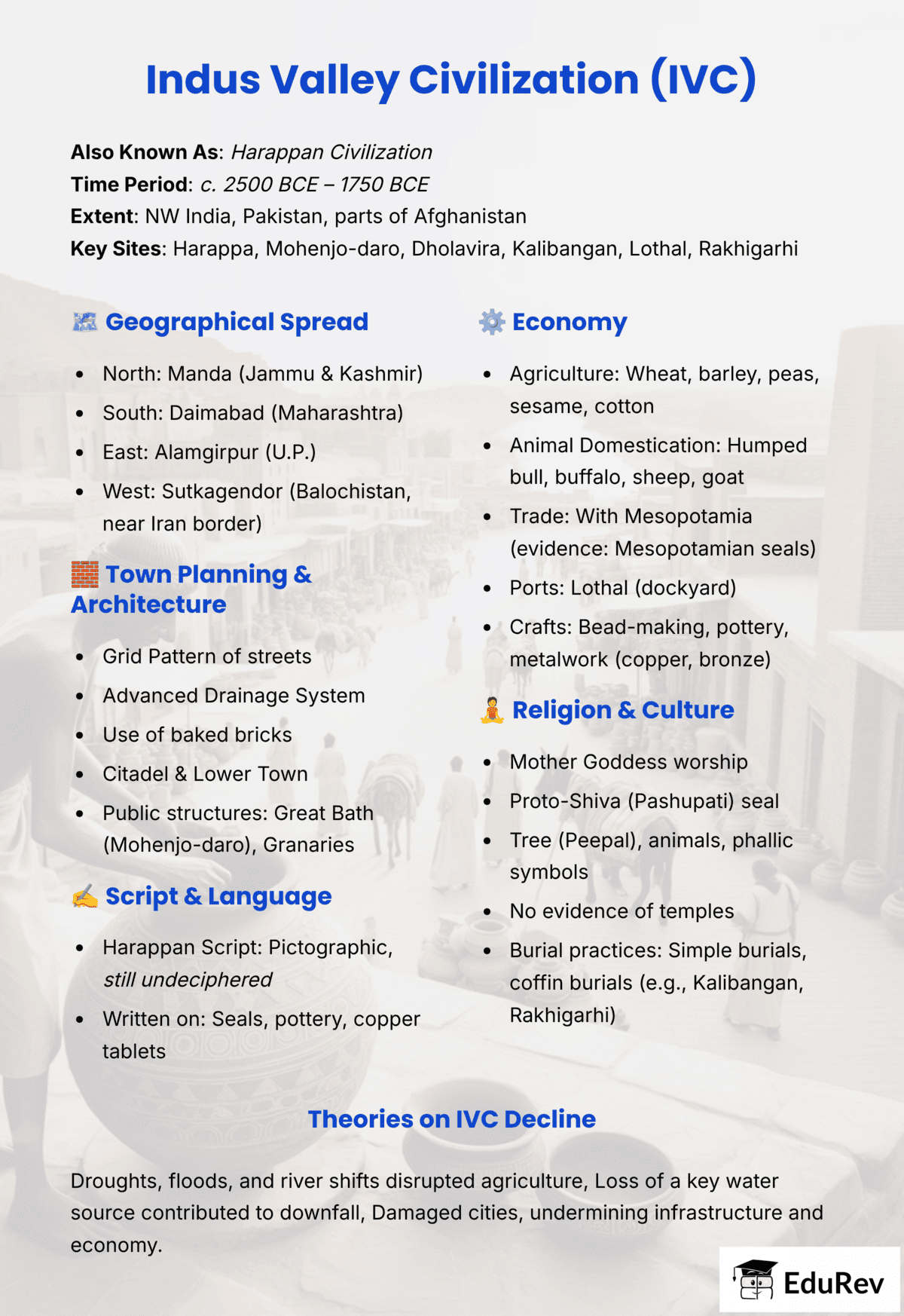UPSC Exam > UPSC Notes > History for UPSC CSE > Infographic: Indus Valley Civilisation
Infographic: Indus Valley Civilisation | History for UPSC CSE PDF Download

The document Infographic: Indus Valley Civilisation | History for UPSC CSE is a part of the UPSC Course History for UPSC CSE.
All you need of UPSC at this link: UPSC
|
216 videos|855 docs|219 tests
|
FAQs on Infographic: Indus Valley Civilisation - History for UPSC CSE
| 1. What were the key features of the urban planning in the Indus Valley Civilization? |  |
Ans. The Indus Valley Civilization is renowned for its advanced urban planning, characterized by grid-patterned streets, sophisticated drainage systems, and standardized fired-brick buildings. Cities like Mohenjo-Daro and Harappa featured well-defined residential and commercial areas, with houses often having their own bathrooms and toilets connected to a central drainage system. The uniformity in their construction materials suggests a high level of administrative control and standardization.
| 2. What were the primary economic activities of the Indus Valley Civilization? |  |
Ans. The economy of the Indus Valley Civilization was primarily based on agriculture, supplemented by trade and craft production. Major crops included wheat, barley, peas, and cotton, which indicates the early practice of agriculture and textile production. Additionally, the civilization engaged in trade with neighboring regions, exchanging goods like beads, metals, and pottery, which facilitated cultural and economic interactions.
| 3. How did the writing system of the Indus Valley Civilization contribute to our understanding of its culture? |  |
Ans. The Indus Valley Civilization had a script that remains undeciphered, consisting of symbols found on seals, pottery, and other artifacts. This writing system is crucial as it provides insights into the civilization’s trade practices, religious beliefs, and social organization. While the inability to decode the script limits our understanding, the presence of various symbols indicates a complex society with administrative and possibly religious functions.
| 4. What were the religious beliefs and practices of the Indus Valley Civilization? |  |
Ans. The religious beliefs of the Indus Valley Civilization are inferred from archaeological findings, including figurines and seals depicting various deities, suggesting a polytheistic belief system. The presence of the 'Mother Goddess' figurines indicates fertility worship, while various animal motifs suggest totemistic practices. Additionally, the layout of some cities, with large public baths, hints at ritualistic practices, possibly related to purification.
| 5. What led to the decline of the Indus Valley Civilization? |  |
Ans. The decline of the Indus Valley Civilization is attributed to several factors, including environmental changes, such as shifts in river patterns and climate change, which affected agriculture. Additionally, evidence of invasions or migrations from neighboring regions may have contributed to societal disruptions. The gradual decline in urban centers indicates a possible shift in population dynamics and economic activities, leading to the eventual disappearance of this advanced civilization.
Related Searches
















